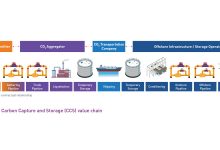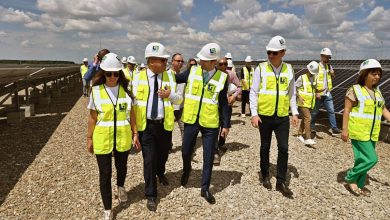H2-Bilanz: Germany Ramping Up H2 Economy
Germany is making progress in ramping up the hydrogen economy. This is shown by the second H2-Bilanz published by E.ON based on data from the Institute of Energy Economics at the University of Cologne (EWI). It is noticeable that a few new projects are now being planned which would increase domestic electrolysis capacity. Moreover, these planned projects are on average significantly larger and thus no longer serve only for testing and research purposes but would also be suitable for the production of hydrogen (H2) on an industrial scale.
Planned H2 generation capacity by 2030 has increased from 5.6 gigawatts in July 2022 to 8.1 gigawatts in February 2023. This shows: Plans to build electrolysis plants to generate hydrogen are picking up speed, making the German government’s goal of 10 gigawatts of installed capacity by 2030 seem more tangible. The other side of the coin is that no final investment decision has yet been made for most of the projects.
E.ON attributes the increase in planned electrolysis capacity, among other things, to the energy crisis. The need to become less dependent on natural gas as quickly as possible and to achieve greater diversification of energy sources has given many plant operators an incentive to plan hydrogen projects.
In turn, the increased electrolysis capacity has narrowed the expected import gap: while this was still 50.5 terawatt hours when the H2-Bilanz was first published last November, E.ON now expects a gap of 43.5 terawatt hours by 2030. The calculation is based on a hydrogen demand of 66 terawatt hours by that year, based on the Deutsche Energie-Agentur (dena) lead study ‘Aufbruch Klimaneutralität’.
However, there has been no tangible progress in developing the infrastructure. Although the planned hydrogen lines have increased from 2,273 to 2,813 kilometres within six months, only 417 kilometres of pure hydrogen lines are currently in operation across Germany.
“It is gratifying that the planned generation capacity for hydrogen in Germany has increased and the expected import gap has narrowed. However, we must not rely on this initially positive development. The planning must be even more ambitious. Otherwise, unrealized projects or construction delays could quickly thwart the achievement of the 10-gigawatt target. In addition, we still lack the infrastructure to transport hydrogen to customers. Germany must therefore now pursue its chosen path even more resolutely and consistently to give the nascent German and European hydrogen economy a real chance on the global market,” E.ON Board Member Patrick Lammers said.
“Green hydrogen is the missing piece of the puzzle for the energy transition. That is why we need research and development and are resolute in driving innovation forward. We need openness to technology and pragmatism in order to pave the way for the transformation, especially for industry and medium-sized companies. We have the potential to turn Germany into a hydrogen republic. We must seize this opportunity,” Till Mansmann, Green Hydrogen Innovation Officer at the Federal Ministry of Education and Research, added.
E.ON still sees an urgent need for clarification, for example, in the framework conditions for the operation of hydrogen networks. Protracted discussions are fuelling uncertainty and thus slowing down the development of a hydrogen network. It is now important that a reliable legal framework is created in the short term to ensure that concrete investments can be made.
The funding framework in Germany and Europe must also be developed quickly to give the market ramp-up of hydrogen outside the USA a realistic chance. This requires pragmatic funding instruments that are easily accessible and quickly available.
A first step has been taken: In February, the EU Commission published the long-awaited definition of when hydrogen is considered ‘green’. While this contains very complex requirements that will become even more stringent from 2029, it at least provides investors and industry with a necessary basis for developing a hydrogen market in Europe.
About the H2-Bilanz
The H2-Bilanz is published twice a year. The scientific, data-based approach is intended to help ensure that the right adjustments are made for a successful hydrogen ramp-up. The analysis incorporates specific project plans through 2030 and indicators such as green hydrogen generation capacity, import volumes, infrastructure, and costs.







